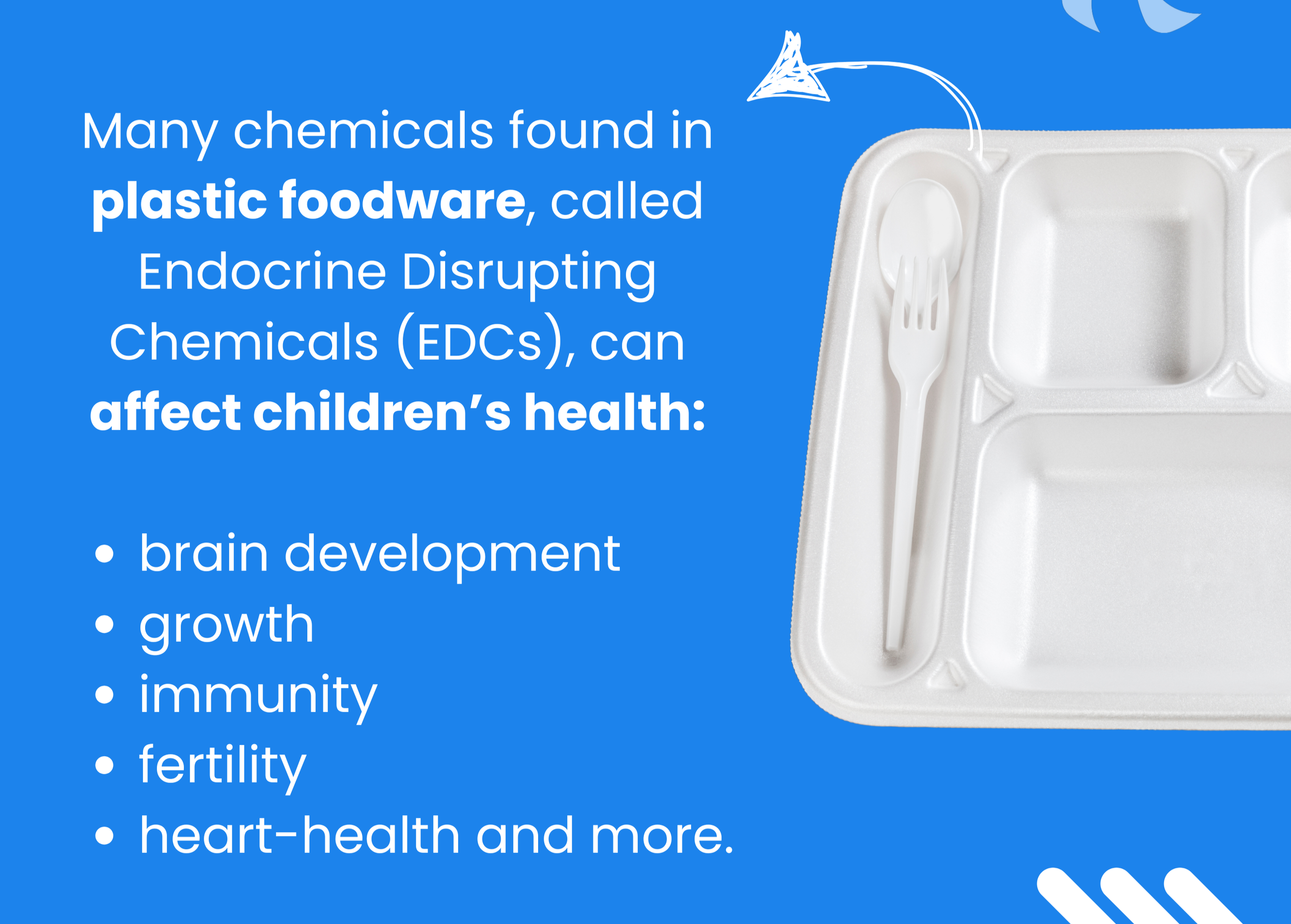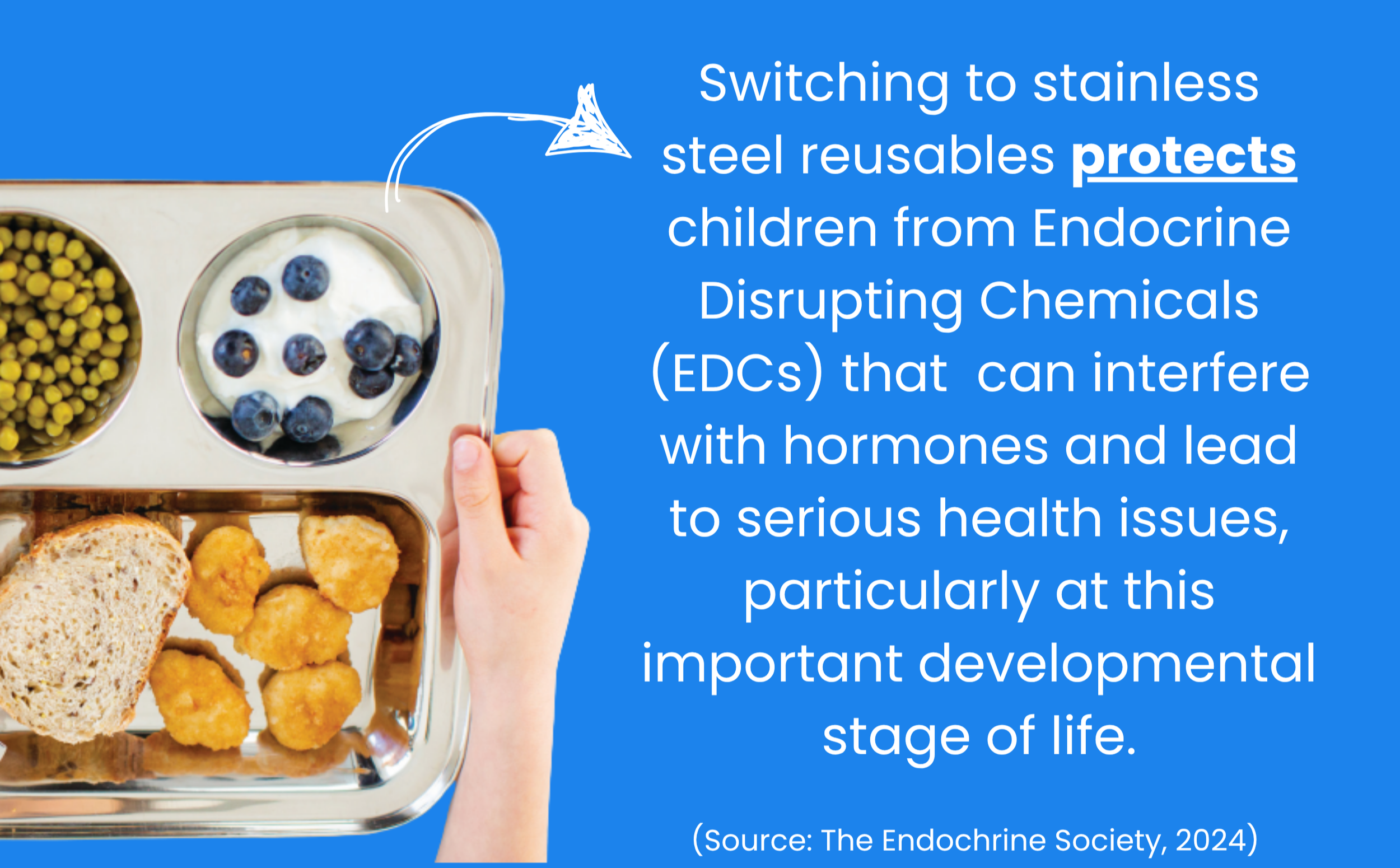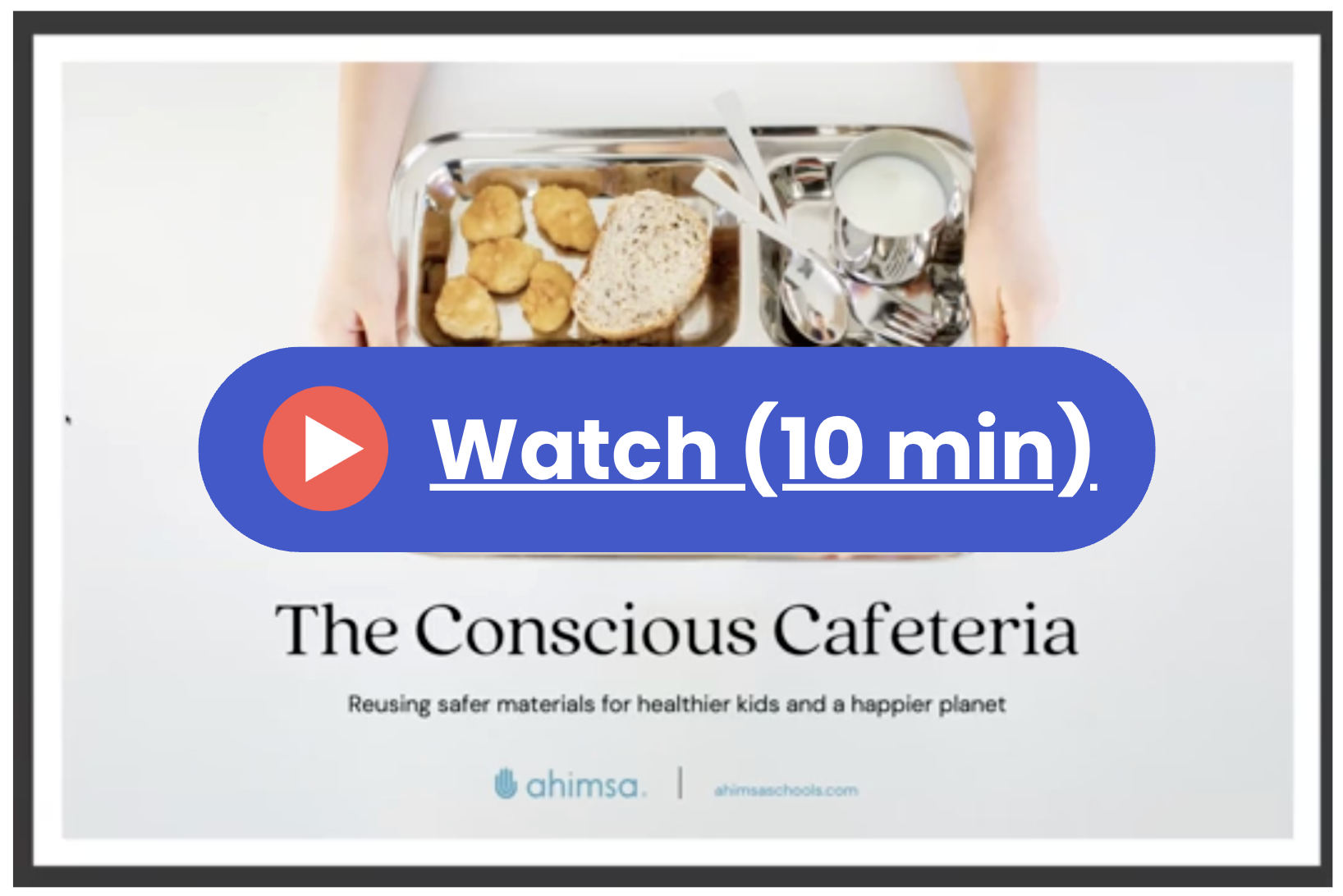Pediatric Perspective: A Wake-Up Call for School Foodware
In a recent Green Schools Alliance webinar, Dr. Manasa Mantravadi—pediatrician, founder of Ahimsa, and creator of The Conscious Cafeteria Project—made one thing clear: plastic foodware isn’t just polluting the planet; it’s affecting our children’s health. From hormone disruption to long-term chronic disease, what’s on a child’s tray may be shaping their future more than we realize. Here are some of the key takeaways from our webinar on making the switch to plastic-free reusables in school cafeterias.
The Link Between Environmental Health and Human Health
The health of our planet and the health of our children are deeply connected,” Dr. Mantravadi explained. Plastic pollution isn’t just an environmental issue — it’s a human health crisis. The chemicals and particles that leach from plastics are showing up in our bodies, affecting children’s development, immunity, and long-term wellbeing.
In short: what we do to the planet, we do to ourselves.
2. A Pediatric Perspective: Urgent Change
Rates of type 2 diabetes, obesity, and early puberty — conditions once almost unheard of in children — are on the rise. These trends, Dr. Mantravadi emphasized, point to an environmental trigger.
The American Academy of Pediatrics (AAP) now formally warns against plastic foodware because of hormone-disrupting chemicals that interfere with growth and metabolism. “This is a turning point,” she said, “akin to when society realized smoking was harmful.”
Her message was clear:
“Advocating for safer foodware is preventive pediatrics at scale — addressing root causes of chronic disease, not just treating symptoms.”
3. How Plastic Affects Children
Children face two major types of exposure:
Chemical exposure: Plastics contain BPA, phthalates, and PFAS, which disrupt hormones that regulate brain development, metabolism, fertility, and immunity.
Particle exposure: Microplastics — now found in food, water, and air — are ingested daily. Emerging research links them to inflammation, metabolic disorders, and cancer.
In the U.S. alone, 30 million school lunches are served every day, often on plastic trays. That daily contact turns a facilities decision into a public health issue.
4. From Single-Use to Systemic Change
School food systems weren’t always disposable. In the 1970s, scratch-cooked meals and reusable dishware gave way to single-use plastics, prioritizing convenience over health. Today, that shift has created billions of plastic trays per year — 5.8 billion in the U.S. alone.
Even compostable products aren’t the answer; many contain PFAS and rarely reach proper composting facilities. “We can’t recycle or compost our way out of this,” Dr. Mantravadi said. “The solution is to return to reuse.”
What about “durable” plastic trays?
Durable plastics shed microplastics during washing. Polycarbonate contains BPA, melamine can leach formaldehyde, and polypropylene has unknown chemical inputs.
AAP recommends avoiding plastic entirely. If you must use it, don’t put it in dishwashers or microwaves—heat increases leaching.
Stainless steel lasts much longer than plastic. Look for a lifetime warranty and multiple safety certifications (e.g. Made Safe, NSF, GreenScreen).
5. The Case for Stainless Steel
The medical consensus is unequivocal: stainless steel and glass are the only materials with a proven safe profile for food contact.
Ahimsa, Dr. Mantravadi’s company, manufactures recycled, certified stainless steel dishware designed specifically for schools. Students adapt quickly — often within days — to the new system. “Behavioral change is easier than people think,” she noted. “When schools lead, children follow.”
6. Financial and Operational Feasibility
Switching from disposable to reusable systems isn’t just healthier — it’s financially smart. Schools typically break even within 2–5 years, then save annually by eliminating ongoing disposable purchases.
The Conscious Cafeteria Report shows that participating schools not only reduced waste and carbon emissions but also cut costs. Dishwashing operations can be purchased, rented, or outsourced, giving schools flexibility to adapt solutions to their context.
7. Education and Culture Shift
For schools, this shift is about more than food service — it’s a teaching opportunity. Students learn stewardship, resourcefulness, and systems thinking through everyday practice.
Ahimsa’s Smurfs program (K–2) helps young learners connect mealtime choices to health and sustainability. “When children see their school align actions with values,” Dr. Mantravadi said, “they internalize sustainability as a life skill, not just a lesson.”
8. A Call to Action
Dr. Mantravadi’s message carries both urgency and hope. The science is clear, the economics are viable, and the opportunity is here:
Replacing plastic foodware with safer, reusable materials is one of the most immediate, scalable, and impactful actions schools can take for children’s health and the planet’s future.
“This is not just sustainability,” she concluded. “This is public health. And our children are counting on us.”
How do you overcome resistance to change?
Lead with children’s health. There is a formal American Academy of Pediatrics (AAP) policy advising against plastic—especially in dishwashers, which increase chemical leaching.
Once food service staff understand the health implications, resistance usually drops.
Whole-school sustainability research shows that when schools lead with health, progress follows. The health case is powerful, alongside financial and reputational benefits.
Keep it simple—“plastic = bad for health.” Microplastics resonate across the political spectrum and are an easy entry point for conversations with school boards and parents.
Watch & share this 10-minute video from our webinar, where Dr. Mantravadi shares about the health impacts of plastics in foodware.
Explore Ahimsa (available in the US): Uses recycled steel and ensures products are fully certified for safety and sustainability
The Conscious Cafeteria Project report shows reduced carbon emissions, waste, and costs across pilot schools.
Learn how START supports Whole School Sustainability and student health.
Share these key takeaways from our webinar on making the switch to reusables.




